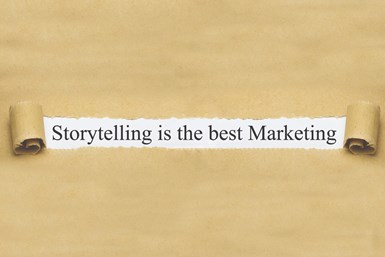Recruiting for Manufacturing Part 2
Branding? Check. Stories (aka messaging)? Check. Now what should you do with them?

Telling your stories increases your company’s brand/reputation in the community.
As discussed in part one of this series, recruitment of a workforce is marketing — selling your company to potential employees. Once you have your brand and your stories, what do you do with them?
Tell Your Stories Online
It’s important to pick the appropriate channel to tell your stories. The trick is to meet your audience where they are. Different media channels appeal to different groups; and age, interests, skills and education levels can differ between the channels.
The answers to your channel questions are right there in your shop. Remember when you profiled your employees after reading last month’s column? Find those employees who are the general age, education and skill level for the worker you seek. Then ask those employees where they get their news, entertainment and social media. If you ask an employee in their 50s who has been with you for 25 years, you will probably get a different answer than the 20 year-old who has been with you for a year. The 50-year-old may get their news from their local channel, entertainment from cable and Facebook is their main social media. Whereas, the 20-year-old probably doesn’t seek out the news, finds their entertainment on YouTube and TikTok, and their social media includes Snapchat and Instagram. So posting on Facebook won’t reach the audience you want to reach.
Tell Your Stories Locally
Local trade schools and high schools are another great channel to tell your stories. Many schools have career days or are looking for speakers to talk about different topics. Bring one of your younger employees to tell the stories or present the topic — the kids will identify with a younger employee and picture themselves in your employee’s position.
Printed flyers work if placed in the correct locations. Create a flyer with one of your stories and the picture of a person, and post it in local coffee houses, libraries and shops. You can also ask employees who live in an apartment building to post a flyer on their community board.
The ultimate local outreach is to hold an open house. Invite local high school and trade school students to see your facility. Showcase your machines, your parts, your process and how precision machining is a part of everyone’s daily life. Ask an employee or two to speak and tell their story. Give attendees a tour and ask them to picture themselves doing this incredible job. Sometimes, all you have to do is get them in the door.
Telling your stories increases your company’s brand/reputation in the community. It’s important to make sure you tell the right stories to the right people in the right place. Next month’s column will discuss formats.
About the Author
Carli Kistler-Miller
Carli Kistler-Miller, MBA, has over 20 years of experience with communications, event/meeting planning, marketing, writing and operations. Email cmiller@pmpa.org at PMPA.
Related Content
-
Craftsman Cribsheet No. 126: AISI System of Identification
Source: PMPA Prior to the Society of Automotive Engineers taking responsibility for Steel Grade nomenclature in the United States (1995), the American Iron and Steel Institute determined U.S. standard steel grades in collaboration with SAE.
-
Roles of Women in Manufacturing: What I Learned
Over 20 women were featured in the Roles of Women in Manufacturing series, which started in January 2023.
-
Craftsman Cribsheet No. 119: Defeating the Hanging Cross-Hole Burr
Deburring is a tedious task that is better left to machines.
















